

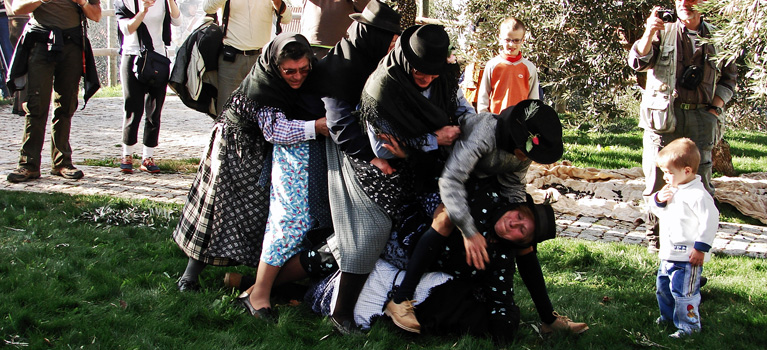

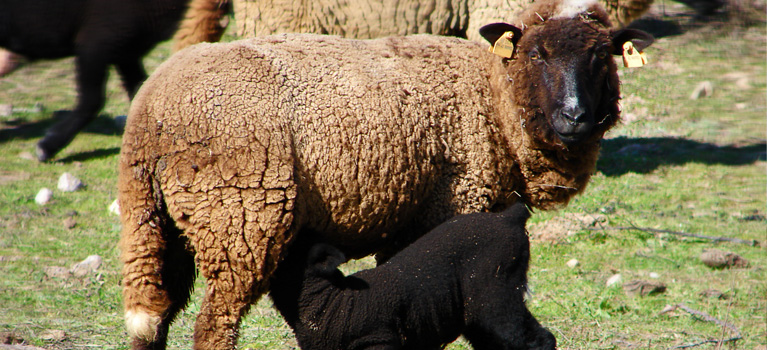
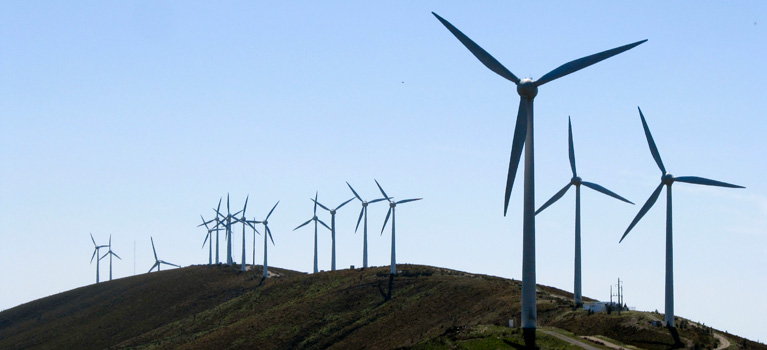
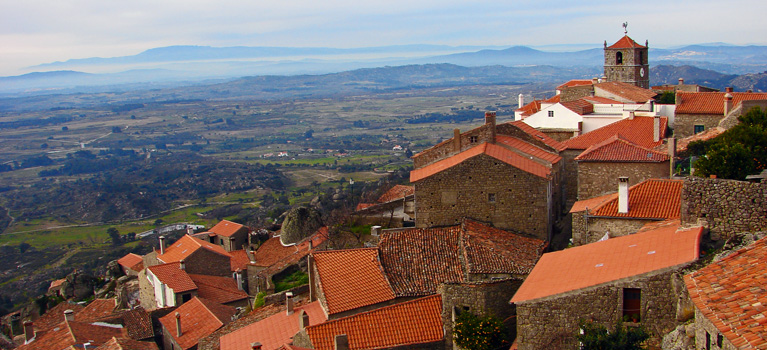
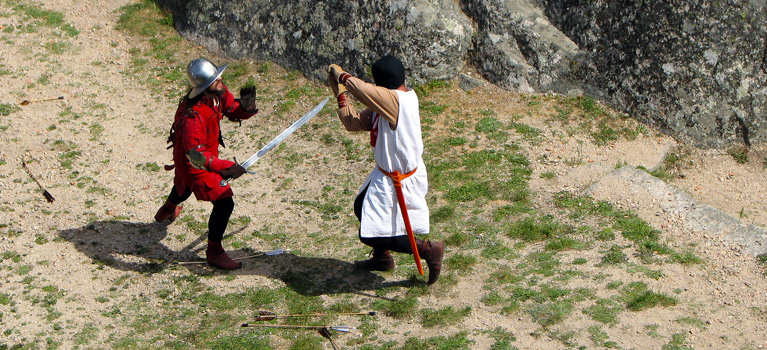
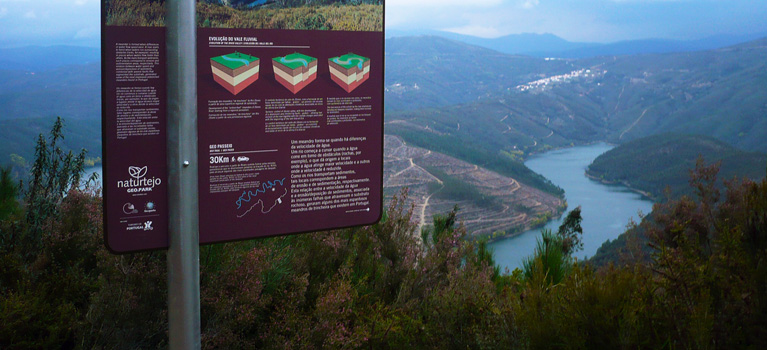

In the Geopark Naturtejo there is a large offer in terms of museology, which represents the importance of the preservation of the cultural heritage and identity of this people. Enjoy your stay here and take a trip through the Museums, where you can feel the nobility of these spaces and absorb our regional culture, as well as appreciate unique artifacts and expand your knowledge about this culture and the people who live here.
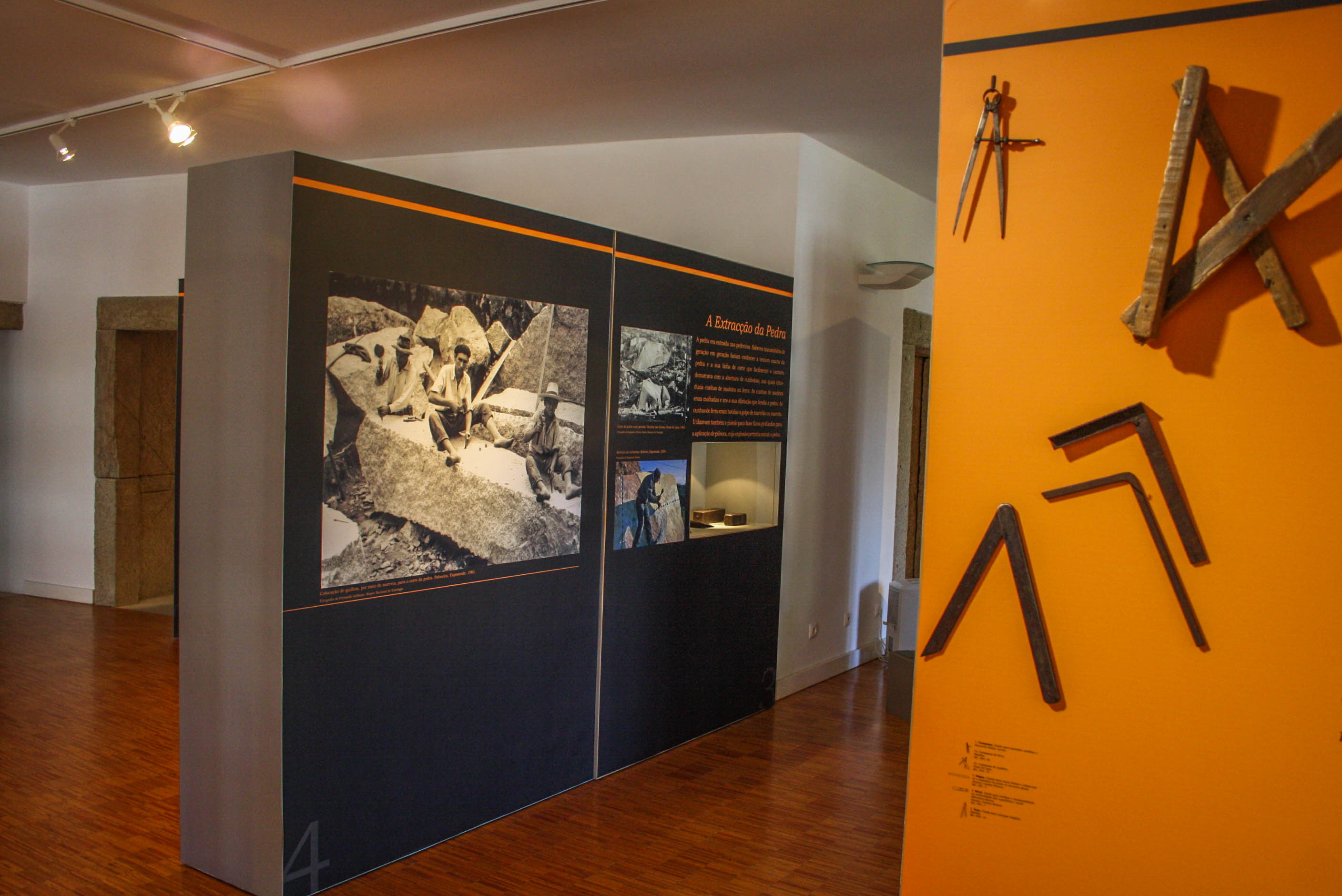
This museum has a permanent exhibition which is called “O Labor do Canteiro” or “The Stonemason’s Work”. This exhibition aims to illustrate the art stone carving, particularly the granite that characterizes this region. It focuses on the stone, the techniques and tools used to shape it, contextualizing them socially, historically and economically. The texture and constitution of these rocks are also approached through sensorial modules. This exhibition documents the practices and techniques which permit the carving and aesthetic decoration of the stone and tells the story of this craft’s evolution.
Contacts
Rua das Fontaínhas, 1. 6005-057 Alcains
Telephone: +351 272 900 220
Fax: +351 272 900 229
Email: museudocanteiro@sapo.pt
Website: http://museudocanteiro.blogspot.pt/
Replica Cartier Watches https://www.uwswing.com
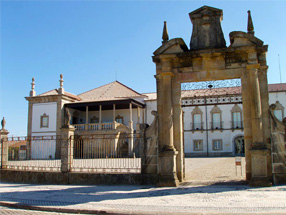
This museum is located in the old Bishop’s Palace, having an area dedicated to temporary exhibitions and an area for a permanent exhibition dedicated to antiquities from the palace, archaeology and embroidery of Castelo Branco. There’s also a library specialized in the themes of archaeology and arts history.
Contacts
Largo Dr. Lopes Dias, 6000-462 Castelo Branco
Telephone: +351 272 344 277
Fax: +351 272 347 880
Email: mstj@ipmuseus.pt
Website: www.ipmuseus.pt
Museum of Religious Art, Castelo Branco
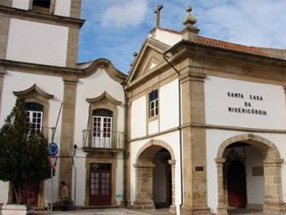
The museum has four different rooms containing a permanent exhibition of a large diversity of religious artifacts, from paintings from the 16th century, liturgical books, and sculptures from the School of Coimbra (16th century), among other elements.
Contacts
Rua Bartolomeu da Costa, Apartado 42. 6000-773 Castelo Branco
Telephone: +351 272 348 420
Fax: +351 272 322 185
Email: scmcb.informatica@netvisão.pt
Center of Environmental Interpretation of Castelo Branco
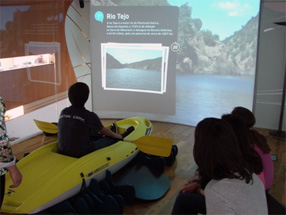
This is a space dedicated to the Parque Natural do Tejo Internacional, the natural reserve associated with the Tagus river, an area of acknowledged ornithology importance, where the steeped hills and the river’s drainage basin play a vital role to the preservation of the fauna. This is an interactive exhibition focusing on many aspects of the natural patrimony through interactive applications, where habitats, ecosystems, fauna, flora, geology and soils are discussed. It is also possible to study the geology of the Tagus and Erges rivers, exploring interactively their main structures and geological units.
Contacts
Rua da Bela Vista - 6000-458 Castelo Branco
Telephone: +351 272 346 068
Fax: +351 272 348 143
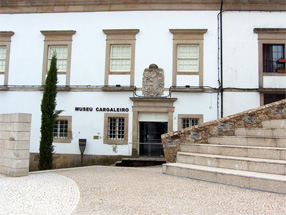
This museum is the result of a partnership between the city’s council and the Manuel Cargaleiro Foundation, aiming to provide connection to the general public with different forms of art through the organization of various exhibitions which are part of the foundation’s collection. In these exhibitions, besides the mastery of the plastic artist Manuel Cargaleiro, born in Vila Velha de Ródão, visitors can also contact with the work of other artists. The museum is located in a manor house built in 1753, in the historic area of the city of Castelo Branco.
Rua dos Cavaleiros, 23. 6000-189 Castelo Branco
Telephone: +351 272 337 394
Email: museucargaleiro.cb@mail.telepac.pt
Lousa's Etnographic and Museological Center
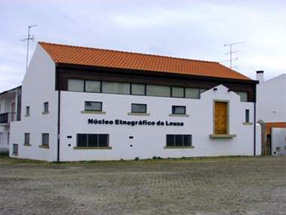
This museum is dedicated to ethnography, and it is located in an old Olive oil press (“Lagar”), where the olive oil was made. It has three rooms dedicated to the cycle of the olive oil, as well as an exhibition dedicated to Lousa’s traditional dances – “The ladies’ dance”, “The men’s dance” and “The scissors’ dance”.
Contacts
Lousa. 6000 Castelo Branco
Telephone: +351 967 125 030
Raiano Cultural Center, Idanha-a-Nova

The Raiano Cultural Center coordinates the basic actions of research, preservation and communication of the cultural heritage and natural patrimony in the territory of Idanha-a-Nova and in all the Geopark. It has 3 exhibition rooms, one of them dedicated to the theme “Agriculture in Idanha’s Fields”, and the other two receiving temporary exhibitions. The Centre also has one indoor and one outdoor auditoriums and a multi-dynamic versatile space where workshops, seminars and other events take place.
Contacts
Av. Zona Nova de Expansão - 6060-101 Idanha-a-Nova
Telephone: +351 277 202 900
Fax: +351 277 202 944
Olive oil Center - "Lagares" Comlex, Proença-a-Velha
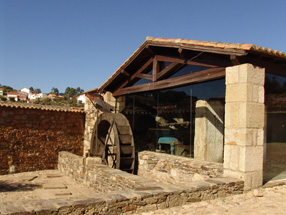
This complex located in Proença-a-Velha is an old structure with high architectonic value, related to the functionality of land laboring. The structure has a set of presses from different periods and levels of technology and a gallery dedicated to the history of the olive in Portugal.
Contacts
Rua da Igreja nº 4 - 6060 Proença-a-Velha
Telephone: +351 277 312 012
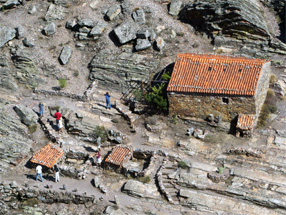
Located in a majestic Site this complex is integrated in the local geology, being constituted by the watermills, with an unique architecture shaped by the cliffs, but also the irrigation systems, the barns, the pig arks, the wood-fired ovens, the vegetable farms… The “Ti Serrano” watermill reveals the dimension of the mills’ inside and the technologies used since the 16th century until the beginning of the 80’s. In other mills, visitors can contact with the tools used in this activity. One of the old barns is today used as a museum, holding the Fossils’ exhibition. This space is known as “The Fossils’ House” (Casa dos Fósseis) and it is home to about 400 specimens of ichnofossils, representing about 17 different forms of behavior, as well as some minerals of local formations.
Posto de Turismo de Penha Garcia
Rua do Espírito Santo - 6060 Penha Garcia
Telephone: +351 277 366 011 | +351 277 366 349
Paleozoic Center, Penha Garcia

The Paleozoic Center, is a museum to be, located in an old typical houses complex in the center of the village of Penha Garcia. Its exhibition entitled “The Trilobites’ world of Sam Gon III” presents this specimen of arthropods, which lived during the Paleozoic, between 540 million and 240 million years ago, telling the geological story of this region and the planet, through the ichnological fossils of the Ponsul valley.
Contacts
Posto de Turismo de Penha Garcia
Rua do Espírito Santo - 6060 Penha Garcia
Telephone: +351 277 366 011 | +351 277 366 349
Monumental Complex of Idanha-a-Velha: Epigraphic Museu and Olive Press
This is an important architectonic complex, labeled as a National Monument and as an Historic Village. It can also be perceived as an outdoor Site museum, comprehending multiple attractions, integrated in an urban circuit. In this circuit the main elements are the roman walls, the pillory, the Cathedral, the Templars’ Tower, the “Lagar the Varas” an old and restored oil press, the Marrocos’ manor house (closed to the public), the Epigraphic Museum and the more recent urban architecture.
Contacts
Posto de Turismo de Idanha-a-Velha
Rua do Lagar - 6060-041 Idanha-a-Velha
Telephone: +351 277 914 280
Monsanto Interpretation Centre, Monsanto
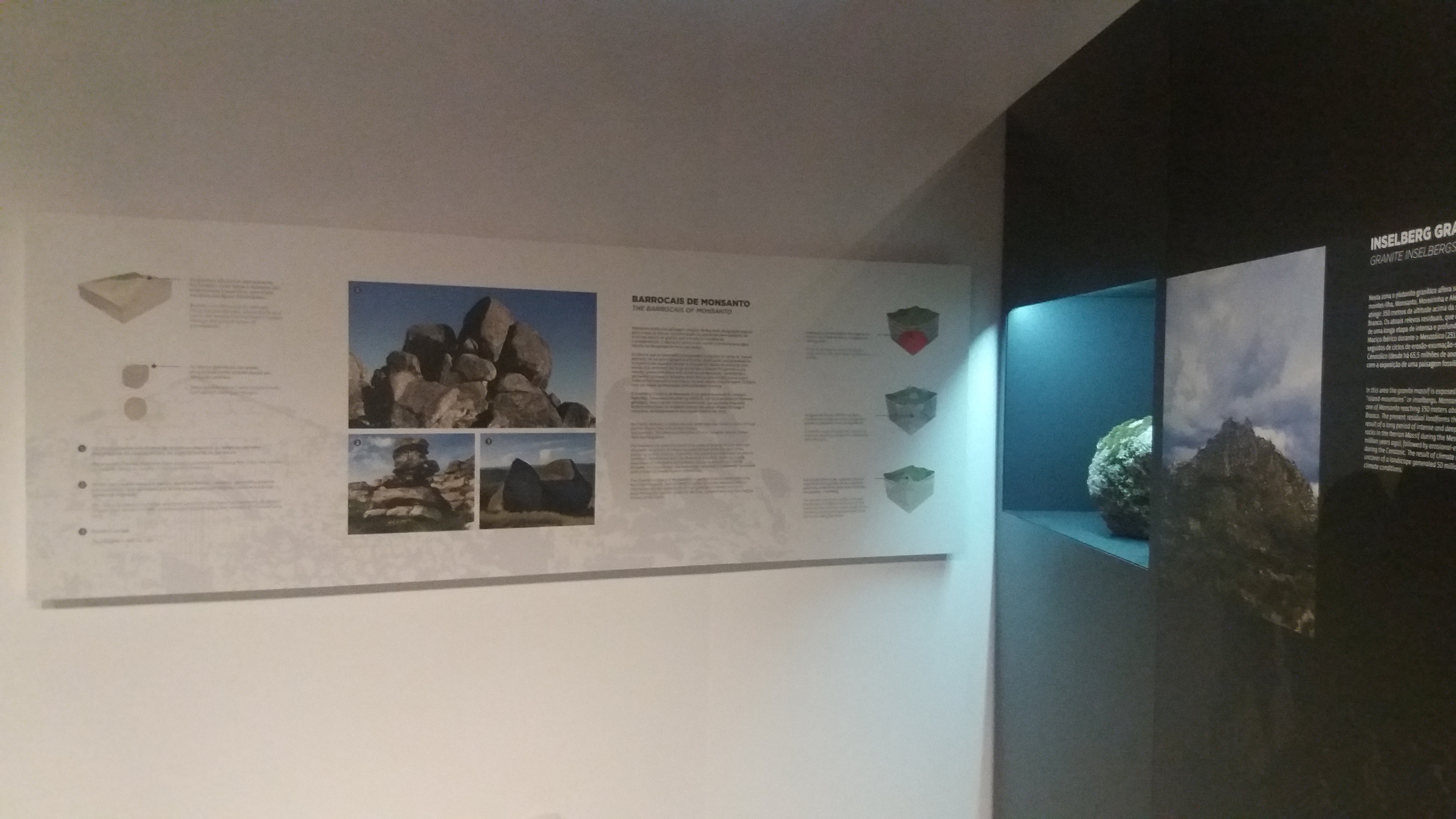
The Interpretation Centre introduces the natural, archaeological and cultural heritage of the Historic Village of Monsanto. It is the starting point for the Boulders Trail.
Contacts
Rua Marquês da Graciosa - 6060-091 Monsanto
Telephone: +351 277 314 642
Cultural Forum of Idanha-a-Nova

The Cultural Forum aims to safeguard and to make known the religious heritage collection of the municipality of Idanha-a-Nova. It exhibits a permanent exhibition about Sacred Art and a temporary exhibition about Traditional Arts. There is an auditorium where several cultural events take place, from jazz concerts, fado, traditional songs, theatre, round tables and lectures.
Contacts
Rua de S. Pedro, n.º 31 - 6060-121 Idanha-a-Nova
Telephone: +351 277 208 029
Living Sceince Center of the Forest, Proença-a-Nova
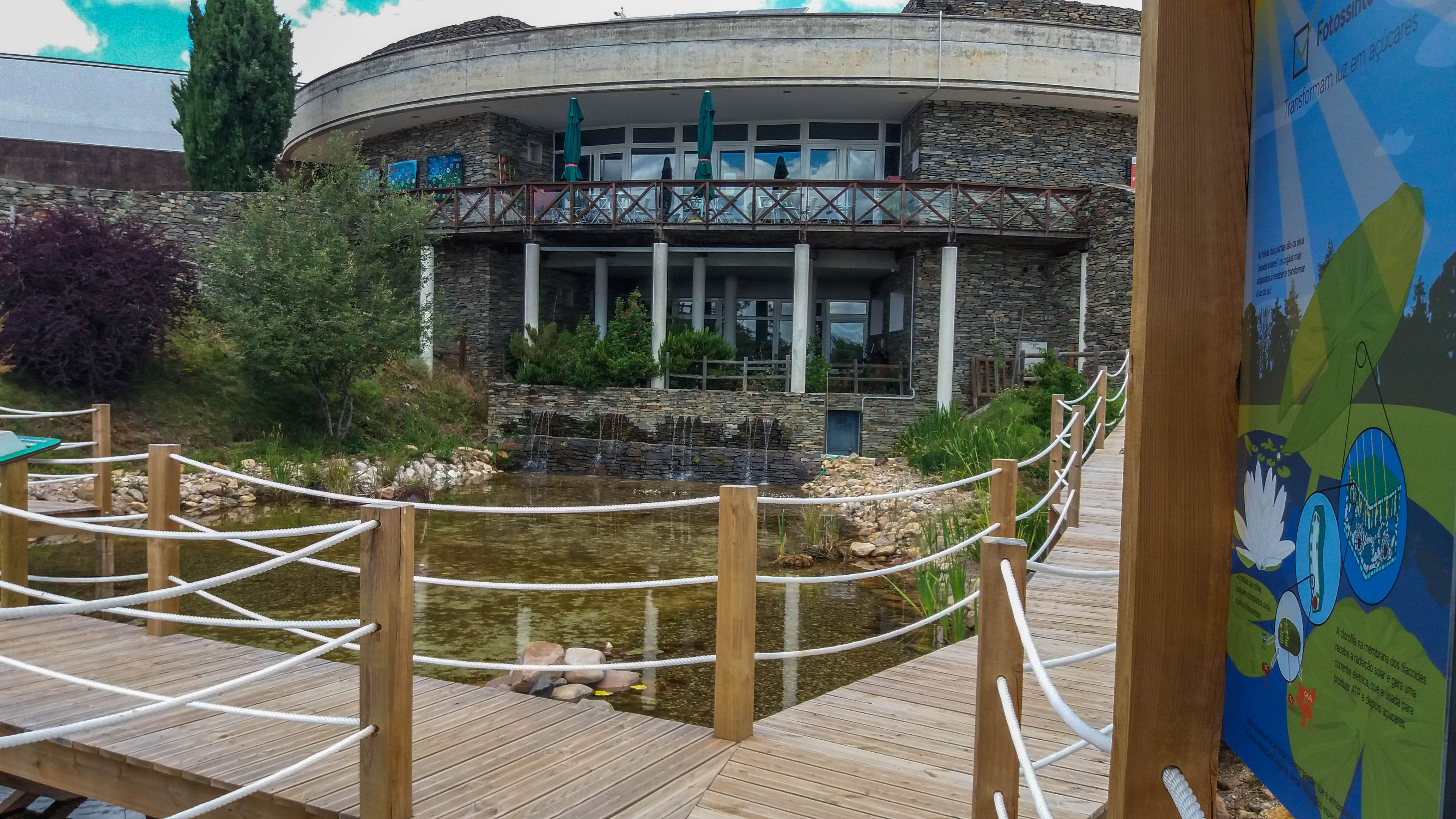
The Living Science Center of the Forest located in Proença-a-Nova, is a place of scientific and technological promotion, integrated in a broader network of pedagogic and scientific interest.
There are three different modules: Forest as a source of life, as a source of well-being and as a source of wealth. According to this premises, the center develops many activities, from scientific workshops, to lectures and others.
Contacts
Moitas - 6150-345 Proença-a-Nova
Telephone: +351 274 670 220
Fax: +351 274 670 228
Email: ccvfloresta@sapo.pt
Website: www.ccvfloresta.com
Embroidery and ceramics Museum, Nisa
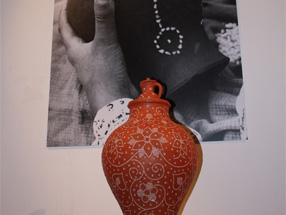
This museum, located in Nisa, holds a series of elements with high historical and artistic value in a permanent exhibition and still has other temporary exhibition rooms. Here the visitor is invited to discover the history of the region, through the use of interactive applications, integrating the tour in the general characteristics of the territory of Nisa.
Contacts
Edifício da Cadeia Nova
Largo da Cadeia Nova - 6050-363 Nisa
Telephone: +351 245 429 426
Fax: +351 245 412 799
Email: museu@cm-nisa.pt
Website: http://www.museubordadoebarro.pt/
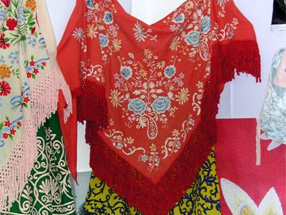
This museum is located in a rural and typical construction, inviting the tourist to a journey through the past and the daily lives of our ancestors. From the old kitchen, with clay pots and plates, the traditional rooms, with iron beds, to the attic, where agriculture utensils were kept, everything in this house reminds us of the past.
Contacts
Rua do Castelo, nº 55 - 6050-031 Alpalhão
Telephone: +351 245 742 154
Interpretative Center of Tagus River Rock Art
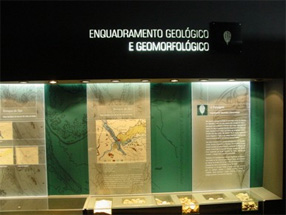
This Interpretative Center offers the visitor an ancient and consistent history: an history made out of Cruziana and fossil trunks, ancient utensils and ceramic pots, cave paintings, cannon balls and reminiscent French invasions paintings. The exhibition is organized chronologically starting with a landscape section, where the geological and geomorfological framing of the region is presented. There is also a tridimensional model of Ródão’s morphology, one of the main formations within the Geopark. The successive periods of the history of this landscape and of the cultural history of this region are well presented in this tour, with a special highlight for the importance of prehistoric paintings.
Contacts
Largo do Pelourinho - 6030-230 Vila Velha de Ródão
Telephone: +351 963 445 866
Website: http://tejo-rupestre.com
E-mail: geral@tejo-rupestre.com
Olive Oil Museological Centre of Sarnadas de Ródão
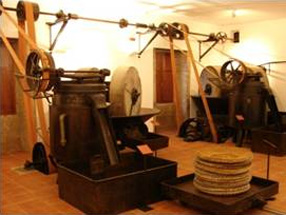
This center is constituted by three different rooms, with a polyvalent room destined to temporary exhibitions. In these three rooms we can find some of the tools used in the fabrication of olive oil. Among them we can find a Reception Room, a Machinery Room and the Olive Oil Room.
Contacts
Junta de Freguesia de Sarnadas de Ródão
Rua Barreiro, 15 - 6030-116 Sarnadas de Ródão
Telephone: +351 272 997 829
Fax: +351 272 997 827
Arts and Crafts Centre Isilda Martins, Sobreira Formosa
This ethnographic centre was created on the initiative of Isilda Martins, technical director of the Sobreira Formosa Singing and Dancing Group. It is a diversified space that includes activities linked to forestry, agriculture
Contacts
Sobreira Formosa
Telephone: +351 274 822 3894
Olive Oil Museum, Sarnadas de Ródão
This space has preserved the olive oil monument from the first half of the 20th century, representing a phase of olive oil production marked by innovation, its architectural structure and the mechanisms used. It thus records an innovative stage in the manufacture of olive oil in the municipality.
Contacts
Junta de Freguesia de Sarnadas de Ródão
Rua Barreiro, 15 - 6030-116 Sarnadas de Ródão
Telephone: +351 272 998 088
Rock Art Interpretative Centre of Tejo, Vila Velha de Ródão
The exhibition presents a geological and geomorphological framework of the landscape as also about life in the time of hunter-gatherers and the different manifestations of rock art in the area. From the Neolithic and Chalcolithic to the present day, visitors are taken on a journey through time and space of a unique region.
Contacts
Largo do Pelourinho
6030-230 Vila Velha de Ródão
Telephone: +351 272 998 088
Website: http://tejo-rupestre.com
E-mail: geral@tejo-rupestre.com
"The Smuggling" Museum, Perais
This museum is dedicated to the history of the parish of Perais, namely the smuggling with Spain during the Spanish Civil War. It displays objects and tools of the daily life of the populations of the border and a remarkable collection of photographs dedicated to the theme.
Contacts
Rua da Fonte Nova, Perais
6030-230 Vila Velha de Ródão
Telephone: +351 272 989 275
Email: jfreguesia_fratel@hotmail.com
Linen and Weaving Museum, Foz do Cobrão
In this Nucleus, located in the old premises of the municipality's spinning mill, techniques related to weaving are presented, some going back to remote periods of History. At Foz do Cobrão the various stages from sowing to weaving are marked, as well as notes on the history of the village.
Contacts
Rua da Fábrica
6030-012 Foz do Cobrão
Telephone: +351 272 540 312
Email: turismo@cm-vvrodao.pt
Museum "History of a rural community", Fratel
The Museum offers a summary of the history of the parish of Fratel, since prehistoric times with notes on agricultural activities, namely olive oil, honey, bread and sausages.
Contacts
Rua da fonte, Fratel
6030-012 Vila Velha de Ródão
Telephone: +351 272 989 275
Email: jfperais@simplesnet.pt
Olive Oil Press, Vila Velha de Ródão
This is an olive oil monument that documents all the historical phases of its manufacture, from the use of human and animal energy to the use of hydraulic and mechanical power. The space consists of two buildings constructed in masonry typical of the region (schist and quartzite), with tulhas (storehouses), animal-drawn mill, stable, stick room, furnace room, room of the two stick presses, task tank, hydraulic mill and vertical hydraulic press, vertical water wheel.
Contacts
Estrada Nacional Nº18
Vila Velha de Ródão
Telephone: +351 272 540 312
Email: turismo@cm-vvrodao.pt
Interpretation Centre of Biodiversity "Lands of Idanha" Segura, Idanha-a-Novao
This Interpretation Centre, located in the International Tagus Natural Park, presents the Biodiversity and the habitats of the municipality of Idanha-a-Nova in an interactive way through multimedia devices. The rocks and landforms are approached as a support to Biodiversity as well as the habitats and landscapes of the Beira Alentejo. The rocks and fossils of the region are presented, not forgetting the materials used in historical constructions.
Contacts
Estrada Nacional 355
6060 – 521 Segura
Telephone: +351 277 202 900
Centre of Contemporary Culture of Castelo Branco Castelo Branco
The Castelo Branco Contemporary Culture Centre is dedicated to contemporary artistic creation. The building was designed by the architects Josep Lluis Mateo and Carlos Reis de Figueiredo.
Contacts
Campo Mártires da Pátria, S/N (Devesa)
6000-097 Castelo Branco
Telephone: +351 272 348 170
Run by the Portuguese Association of Parents and Friends of the Mentally Handicapped Citizen (APPACDM) of Castelo Branco, the Silk Museum was created to make the general public aware of the History of Silk production in Portugal, the life cycle of the Silkworm, the conventional and high-tech applications - namely in Biology and Medicine - that can be made from the use of this little-known and yet invaluable product.
Contacts
Quinta da Carapalha de Baixo, Rua A
6000-763 Castelo Branco
Telephone: +351 961 970 161
Email: museudaseda@gmail.com
Textile Museum, Cebolais de Cima Castelo Branco
The Textile Museum - MUTEX of Castelo Branco is a facility that aims to transmit to visitors knowledge about industrial and technical heritage of the textile sector. The Textile Museum is constituted by a museum space where the original mechanisms of the company were preserved in loco, which contemplate the phases of production related to carding and spinning. It also has an experimental space, with an audiovisual room and mechanisms related to the weaving process. Between these two floors, we find a third intermediate space, designated as "memory space", which has the objective of presenting tributes to the workers and entrepreneurs responsible for the creation of this industry.
Contacts
Avenida Infante Dom Henrique, Nº33
6000-500 Cebolais de Cima
Telephone: +351 272 989 047
Email: geral.mutex@cm-castelobranco.pt
Embroidery Interpretation Centre, Castelo Branco
The Castelo Branco Embroidery Interpretation Centre is an equipment designed to promote the revaluation, recovery, innovation and revival of the ex-libris of the city, classified as a handicraft piece, but which, in reality, is assumed as a form of unique artistic expression. The Interpretation Centre offers the visitor a space that brings together ancient artefacts and the most recent digital/technological supports, in a journey that takes the visitor through the origins of the Castelo Branco Embroidery, from the sowing of linen to the weaving, through the creation of the silkworm and extraction of raw material, evolution of the Embroidery and the technique (stitches), as well as the historical framework and symbology.
Contacts
Praça Camões
6000-116 Castelo Branco
Telephone: +351 272 323 402
Email: bordados@cm-castelobranco.pt
Centro de Interpretação Casa do Rossio, Lardosa
The Casa do Rossio Interpretation Centre is an exhibition space that seeks to preserve memories and experiences of rural daily life, being an identity reference for the populations of the municipality of Castelo Branco, particularly for the parish of Lardosa.
Contacts
Travessa do Rossio
6005 - 193 Lardosa
Telephone: +351 272 447 503
Museum "S. Pedro de Alcântara", Penha Garcia
It houses the rich collection and library donated by Father João Pires de Campos to Idanha-a- Nova Town Council.
Contacts
Rua do Espírito Santo
6060–327 Penha Garcia
Telephone: +351 272 366 011
Ribeiro Sanches Sephardic Medicine Memory House Penamacor
The Sephardic Medicine Memorial House is a space dedicated to the doctor, philosopher and scientist of Jewish origin Ribeiro Sanches, who was born in the municipality.
Contacts
R. Dom Sancho I, 20
6090-570 Penamacor
Conhal do Arneiro Interpretation Centre, Santana
Housed in the former Duque primary school, the Conhal Interpretation Centre enables you to understand the natural heritage and mining history of Conhal do Arneiro.
Contacts
Antiga Escola Primária do Duque
6050-452 Arneiro, Santana
Telephone: +351 245 098 059
Jewish Memorial House, Castelo Branco
The House of Memory of the Jewish Presence in Castelo Branco is a tribute to the History of the Jewish People, to the ancient Jewish Community that lived in the city and strongly contributed to the commercial and economic development of the city and a tribute to the Memory of all those who were persecuted or killed by the Inquisition.
Contacts
Rua das Olarias Nº 43
6000-176 Castelo Branco
Telephone: +351 272 323 033
Website: www.casadamemoriajudaica.pt
Email: museu@casadamemoriajudaica.pt
Penamacor's Municipal Museum was created in 1949 by initiative of the Town Council and housed in the former Domus Municipalis building. In addition to the valuable archaeological collection and some notable examples of sacred art, visitors can also admire collections as disparate and surprising as numismatics, agricultural implements and tools, utensils and tools of trade, and an interesting display of embalmed specimens of local fauna, including the Iberian Lynx.
Contacts
Largo Tenente Coronel Júlio Rodrigues da Silva (ex-Quartel)
6090-545 Penamacor
Telephone: +351 277 394 106
E-mail: gab.info@cm-penamacor.pt
Aldeia de João Pires Museum, Penamacor
The Museu Paroquial de Aldeia de João Pires has collections of sacred art, archaeology and ethnography. The pieces of sacred art date mainly from the 17th and 19th centuries and come from various places of worship, some of which have already disappeared.
Contacts
Centro Paroquial de Aldeia de João Pires
Largo do Adro da Igreja
6090 Aldeia de João Pires
Telephone: +351 277 385 418 / +351 918 168 1336
Besides a significant group of symbolically decorated discoid stelae, dating from the early Middle Ages, there are still Roman Inscriptions from Bemposta which document a very suggestive process of acculturation between the pre-existing population and the newly arrived Romans.
Contacts
Núcleo Museológico da Bemposta, Capela de S. Sebastião
Rua de S. Sebastião
6090-281 Bemposta, Penamacor
Telephone: +351 934 272 067 / +351 969 655 018
Dr. Mário Bento Museum Meimoa, Penamacor
Dr. Mário Bento Museum exhibits the archaeological and ethnographic collection donated by the museum's patron, and displays the mill's industrial equipment and furniture.
Contacts
Estrada Nacional 233
6090-385 Meimoa, Penamacor
Telephone: +351 969 960 103/ +351 969 655 018

Geopark Naturtejo © 2025 All rights reserved
Créditos Fotográficos:
Pedro Martins
Stock Images of the Geopark Naturtejo
Developed by citricweb.pt